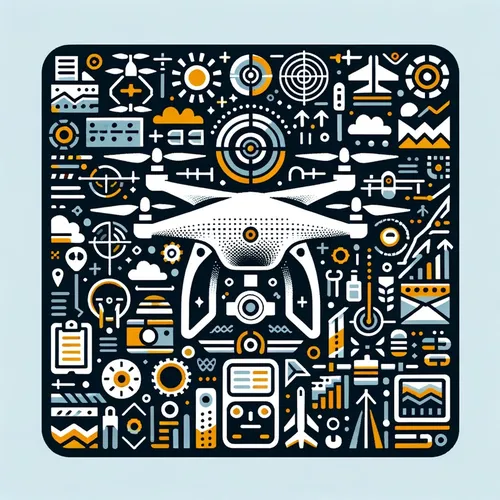Drone Biz Buzz: AI Pilots, Robo-Mechanics, and the FAAs New Night Moves
- Author
- Quiet. Please
- Published
- Mon 28 Jul 2025
- Episode Link
- https://www.spreaker.com/episode/drone-biz-buzz-ai-pilots-robo-mechanics-and-the-faas-new-night-moves--67150093
This is you Professional Drone Pilot: Flight Tips & Industry Updates podcast.
For professional drone pilots gearing up for flights this week, the landscape of commercial UAV operations is rapidly evolving. Mastering advanced flight techniques now demands more than just stick time; skilled operators are investing in deep learning around automated waypoint missions, leveraging software for hyper-precise pattern mapping, and tapping into advanced obstacle avoidance settings. Building inspection in major metros like New York City now utilizes drones with dual 4K cameras and AI-driven thermal imaging, allowing for concurrent cleaning and micro-level inspection that can save clients tens of thousands in preventive repairs, as detailed in DroneLife’s coverage of transformative building maintenance projects in 2025.
Equipment reliability is no longer a guessing game, thanks to predictive maintenance powered by real-time sensor arrays and machine learning. Modern fleets are embedding Internet of Things sensors that track motor vibration and battery health, with predictive alerts now flagging subtle anomalies well before failure. Automation not only lowers maintenance costs but also maximizes uptime and safety. The drone maintenance services market is accelerating, with Archive Market Research forecasting a compound annual growth rate above five percent through 2033, citing both technology adoption and regulatory pressure as market drivers.
Staying compliant remains critical. To operate legally for business in the United States, commercial pilots must maintain a current Federal Aviation Administration Part 107 remote pilot certificate, including online recurrent training every 24 months according to the FAA. The licensing process covers everything from airspace and weather, to emergency procedures and radio communications. Note that liability insurance is a must for commercial pilots, as both property and personal injury exposure continue to climb, and many clients demand proof of coverage before projects commence.
In terms of business opportunity, commercial drone services continue to diversify. Growth is seen in infrastructure inspection, precision agriculture, construction monitoring, and digital media creation, with the drone-as-a-service model—where clients buy comprehensive flight, analytics, and maintenance in one—gaining traction. Pricing strategies remain complex: leading operators are now benchmarking by deliverable complexity and consulting with clients upfront for project scoping and risk assessment, a practice that fosters clarity and repeat business.
Current news highlights include the rapid expansion of drone-based facade inspection in urban centers, new FAA guidance on night operations, and insurance providers updating policy frameworks to reflect recent court rulings on aerial liability.
For your pre-flight planning, always check updated weather advisories, as summer heatwaves can affect battery longevity and drone performance. Use detailed pre-flight checklists and keep client communication proactive, especially about turnaround times and contingency plans during volatile weather.
Looking forward, anticipate even greater autonomy through artificial intelligence flight control and fully integrated end-to-end service platforms, reshaping what it means to be a pilot and entrepreneur in this industry.
Thank you for tuning in on your path to becoming a better pilot. Whether you’re operating solo or running a team, check back next week for new coverage on tools, tactics, and trends redefining professional drone operations. This has been a Quiet Please production. For more, check out Quiet Please Dot A I.
For more http://www.quietplease.ai
Get the best deals https://amzn.to/3ODvOta
